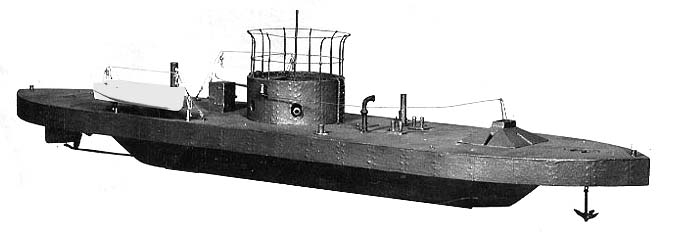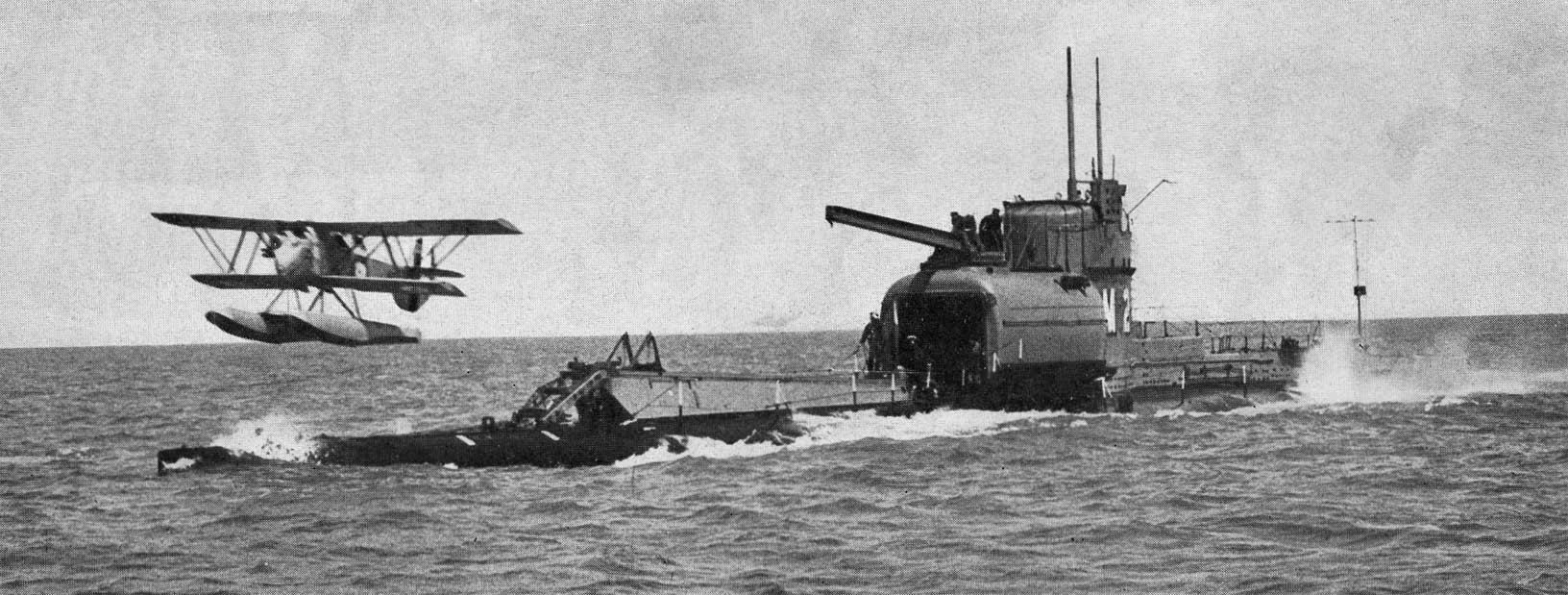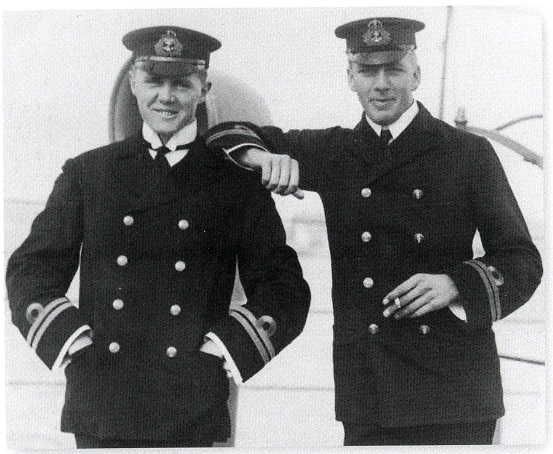|
British M Class Submarine
The British Royal Navy M-class submarines were a small class of diesel-electric submarines built during World War I. The unique feature of the class design was a 12-inch (305 mm) gun mounted in a casemate forward of the conning tower. Due to the limitations imposed on submarine armament by the Washington Naval Conference, ''M2'' and ''M3'' had their guns removed. ''M2'' was converted to carry a small seaplane and ''M3'' was made into a minelayer. Background They were ordered in place of the last four of the first group of steam-propelled K-class fleet submarines, ''K17'' - ''K21'', the original orders being cancelled. They were initially intended as coastal bombardment vessels, submarine monitors, but their role had been changed before detailed design begun. The intention was that merchant ships could be engaged at periscope depth or on the surface using the gun, rather than torpedoes. At that time torpedoes were considered ineffective against moving warships at mo ... [...More Info...] [...Related Items...] OR: [Wikipedia] [Google] [Baidu] |
HMS M1 From Air Port Bow
HMS or hms may refer to: Education * Habib Medical School, of the Islamic University in Uganda * Hartley–Melvin–Sanborn Community School District of Iowa, United States * Harvard Medical School of Harvard University * Heidelberg Middle School, a former American school in Heidelberg, Germany * Hongwanji Mission School, in Hawaii, United States * Horley Methodist School, Teluk Intan, in Malaysia Medicine and science * Hartford Medical Society, an American professional association based in Hartford, Connecticut *Health management system * Hexose monophosphate shunt, an alternative name for the pentose phosphate pathway * Highly migratory species, a classification of fish * Hypermobility spectrum disorder, formerly hypermobility syndrome or HMS * HMS, a brand name of medrysone Technology *Huawei Mobile Services, proprietary apps and services from Huawei bundled with Android devices * HMS Networks, a company in the field of industrial communications * Heavy melting ste ... [...More Info...] [...Related Items...] OR: [Wikipedia] [Google] [Baidu] |
Monitor (warship)
A monitor is a relatively small warship that is neither fast nor strongly armored but carries disproportionately large guns. They were used by some navies from the 1860s, during the First World War and with limited use in the Second World War. The original monitor was designed in 1861 by John Ericsson, who named it . Subsequent vessels of this type were accordingly classed as "monitors". They were designed for shallow waters and served as coastal ships. The term also encompassed more flexible breastwork monitors, and was sometimes used as a generic term for any turreted ship. In the early 20th century, the term was revived for shallow-draught armoured shore bombardment vessels, particularly those of the Royal Navy: the s carried guns firing heavier shells than any other warship ever has, seeing action (albeit briefly) against German targets during World War I. The ''Lord Clive'' vessels were scrapped in the 1920s. The term "monitor" also encompasses the strongest of riverine ... [...More Info...] [...Related Items...] OR: [Wikipedia] [Google] [Baidu] |
Dorset
Dorset ( ; Archaism, archaically: Dorsetshire , ) is a Ceremonial counties of England, ceremonial county in South West England. It is bordered by Somerset to the north-west, Wiltshire to the north and the north-east, Hampshire to the east, the Isle of Wight across the Solent to the south-east, the English Channel to the south, and Devon to the west. The largest settlement is Bournemouth, and the county town is Dorchester, Dorset, Dorchester. The county has an area of and a population of 772,268. Around half of the population lives in the South East Dorset conurbation, which contains three of the county's largest settlements: Bournemouth (183,491), Poole (151,500), and Christchurch, Dorset, Christchurch (31,372). The remainder of the county is largely rural, and its principal towns are Weymouth, Dorset, Weymouth (53,427) and Dorchester, Dorset, Dorchester (21,366). Dorset contains two Unitary authorities in England, unitary districts: Bournemouth, Christchurch and Poole (BCP) ... [...More Info...] [...Related Items...] OR: [Wikipedia] [Google] [Baidu] |
Chesil Beach
Chesil Beach (also known as Chesil Bank) in Dorset, England, is one of three major shingle beach structures in Britain.A. P. Carr and M. W. L. Blackley, "Investigations Bearing on the Age and Development of Chesil Beach, Dorset, and the Associated Area" ''Transactions of the Institute of British Geographers'', No. 58 (March 1973) pp. 99-111. Its name is derived from the word '' chessil'' (Old English or ), meaning "gravel" or "shingle". It runs for a length of from West Bay to the Isle of Portland and in places is up to high and wide. Behind the beach is the Fleet, a shallow tidal lagoon. Both are part of the Jurassic Coast and a UNESCO World Heritage Site, and together form a Site of Special Scientific Interest (SSSI) and a Ramsar Site. Owners of the land designated as ''Chesil & The Fleet'' SSSI include the Crown Estate, the Ministry of Defence and the National Trust. The beach is almost entirely made of stone shingle, and the typical size of stones reduces steadi ... [...More Info...] [...Related Items...] OR: [Wikipedia] [Google] [Baidu] |
HMS M2 (1918)
HMS ''M2'' was a Royal Navy submarine monitor completed in 1919, converted in 1927 into a submarine aircraft carrier. She was wrecked in Lyme Bay, Dorset, Britain, on 26 January 1932. She was one of three M-class boats completed. Design and career Four M-class submarines replaced the order for the last four K-class submarines, ''K17''-''K21''. Although they were similar in size, the M class was an entirely different design from the K class, although it is possible that some material ordered for the K-boats went into them. In any event, the end of the First World War meant that only three were completed. ''M2'' was laid down at Vickers shipyard at Barrow in Furness in 1916, and launched in 1918. Like the other members of her class, she was armed with a single fixed 12-inch (305mm) gun as well as torpedo tubes. The Mark IX gun was taken from spares held for the ''Formidable''-class battleships. The M-class submarines were very large for the time at long. They were ... [...More Info...] [...Related Items...] OR: [Wikipedia] [Google] [Baidu] |
British Submarine HMS M2, 2
British may refer to: Peoples, culture, and language * British people, nationals or natives of the United Kingdom, British Overseas Territories and Crown Dependencies. * British national identity, the characteristics of British people and culture * British English, the English language as spoken and written in United Kingdom of Great Britain and Northern Ireland and, more broadly, throughout the British Isles * Celtic Britons, an ancient ethno-linguistic group * Brittonic languages, a branch of the Insular Celtic language family (formerly called British) ** Common Brittonic, an ancient language Other uses *People or things associated with: ** Great Britain, an island ** British Isles, an island group ** United Kingdom, a sovereign state ** British Empire, a historical global colonial empire ** Kingdom of Great Britain (1707–1800) ** United Kingdom of Great Britain and Ireland (1801–1922) * British Raj, colonial India under the British Empire * British Hong Kong, colonial H ... [...More Info...] [...Related Items...] OR: [Wikipedia] [Google] [Baidu] |
BBC TV
BBC Television is a service of the BBC. The corporation has operated a public broadcast television service in the United Kingdom, under the terms of a royal charter, since 1 January 1927. It produced television programmes from its own studios from 1932, although the start of its regular service of television broadcasts is dated to 2 November 1936. The BBC's domestic television channels have no commercial advertising and collectively they accounted for more than 30% of all UK viewing in 2013. The services are funded by a television licence. As a result of the 2016 Licence Fee settlement, the BBC Television division was split, with in-house television production being separated into a new division called BBC Studios and the remaining parts of television (channels and genre commissioning, BBC Sport and BBC iPlayer) being renamed BBC Content. History of BBC Television The BBC operates several television networks, television stations (although there is generally very little disti ... [...More Info...] [...Related Items...] OR: [Wikipedia] [Google] [Baidu] |
Richard Larn
Richard James Vincent Larn, OBE (born 1931 Larn was among the principal organisers and also gave public lectures, as did Dava Sobel, author of ''Longitude'', and Sir Arnold Wolfendale, the 14th Astronomer Royal. Honours Besides receiving awards from diving and maritime history associations, Larn was made a Cornish Bard by the Gorsedd of Cornwall at Redruth in 2006, taking the Bardic name 'Gonyas an Mor' Servant of the Sea. He started a company Shipwrecks.UK.Ltd, and has a web site www.shipwreckphotographs.com, still being developed. In the Birthday Honours 2009 he was made an Officer of the Order of the British Empire (OBE) for "services to nautical archaeology and marine heritage". awarded the prestigious USA's 'Knight of Mark Twain'(1970). Larn, one of the original founders, has been the President and News Letter Editor of IMASS (International Marine Archaeological & Shipwreck Society) since 2010, an organisation which holds the prestige Shipwreck Conference annually at Plym ... [...More Info...] [...Related Items...] OR: [Wikipedia] [Google] [Baidu] |
Innes McCartney
Innes McCartney (born 1964) is a British nautical archaeologist and historian. He is a Visiting Fellow at Bournemouth University in the UK. Career McCartney is a nautical archaeologist specializing in the interaction of shipwreck archaeology with the historical record. In 1999, he discovered the 12-inch-gunned submarine off Start Point in the English Channel. In 2001, he discovered the wreck of , sunk at the Battle of Jutland. In the same year he led expeditions to identify some of the U-boats sunk during Operation Deadlight. Fourteen U-boats were surveyed and several new sites discovered. In 2003 he identified the mystery World War I U-boat off Trevose Head, Cornwall, as by scraping the propellers to reveal the shipyard stamp. This proved that even at a depth of , war graves of this type can be identified by divers without the need to scavenge parts from them. This featured in the Channel 4 series '' Wreck Detectives''. In 2006 he featured in the documentary ''U-boat ... [...More Info...] [...Related Items...] OR: [Wikipedia] [Google] [Baidu] |
Devon
Devon ( ; historically also known as Devonshire , ) is a ceremonial county in South West England. It is bordered by the Bristol Channel to the north, Somerset and Dorset to the east, the English Channel to the south, and Cornwall to the west. The city of Plymouth is the largest settlement, and the city of Exeter is the county town. The county has an area of and a population of 1,194,166. The largest settlements after Plymouth (264,695) are the city of Exeter (130,709) and the Seaside resort, seaside resorts of Torquay and Paignton, which have a combined population of 115,410. They all are located along the south coast, which is the most populous part of the county; Barnstaple (31,275) and Tiverton, Devon, Tiverton (22,291) are the largest towns in the north and centre respectively. For local government purposes Devon comprises a non-metropolitan county, with eight districts, and the Unitary authorities of England, unitary authority areas of Plymouth City Council, Plymouth an ... [...More Info...] [...Related Items...] OR: [Wikipedia] [Google] [Baidu] |
English Channel
The English Channel, also known as the Channel, is an arm of the Atlantic Ocean that separates Southern England from northern France. It links to the southern part of the North Sea by the Strait of Dover at its northeastern end. It is the busiest Sea lane, shipping area in the world. It is about long and varies in width from at its widest to at its narrowest in the Strait of Dover."English Channel". ''The Columbia Encyclopedia'', 2004. It is the smallest of the shallow seas around the continental shelf of Europe, covering an area of some . The Channel aided the United Kingdom in becoming a naval superpower, serving as a natural defence against invasions, such as in the Napoleonic Wars and in the World War II, Second World War. The northern, English coast of the Channel is more populous than the southern, French coast. The major languages spoken in this region are English language, English and French language, French. Names Roman historiography, Roman sources as (or , ... [...More Info...] [...Related Items...] OR: [Wikipedia] [Google] [Baidu] |
Max Kennedy Horton
Admiral Sir Max Kennedy Horton, (29 November 1883 – 30 July 1951) was a British submariner during the First World War and commander-in-chief of the Western Approaches in the later half of the Second World War, responsible for British participation in the Battle of the Atlantic. Early life Max Horton was born in Anglesey to Robert Joseph Angel Horton and Esther/Hester Maude Goldsmid, of the famous Goldsmid/D'Avigdor Goldsmid Anglo-Jewish family. Horton joined the Royal Navy officer training ship, HMS ''Britannia'' on 15 September 1898. Whilst on , he was involved in the rescue efforts when ran aground off Cape Spartel and was subsequently awarded the Board of Trade Medal for Saving Life at Sea in silver. First World War The outbreak of war saw Lieutenant-Commander Horton in command of one of the first British ocean-going submarines, the 800-ton . At dawn on 13 September 1914, he torpedoed the German light cruiser six miles southwest of Heligoland. ''Hela'' was hit amid ... [...More Info...] [...Related Items...] OR: [Wikipedia] [Google] [Baidu] |






